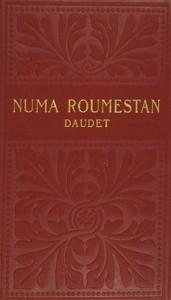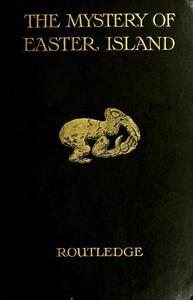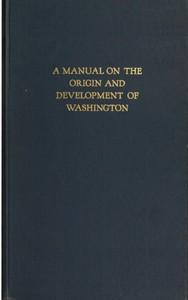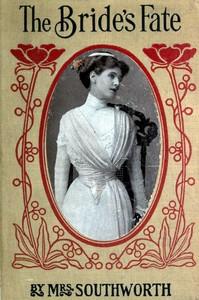|
|
Read this ebook for free! No credit card needed, absolutely nothing to pay.Words: 159055 in 92 pages
This is an ebook sharing website. You can read the uploaded ebooks for free here. No credit cards needed, nothing to pay. If you want to own a digital copy of the ebook, or want to read offline with your favorite ebook-reader, then you can choose to buy and download the ebook.

: Monarchs of minstrelsy from Daddy Rice to date by Rice Edw Le Roy Edward Le Roy - Minstrel shows; Actors United States@FreeBooksThu 08 Jun, 2023 The Arrangement of Atoms in Space in Organic Molecules.--A review of Prof. JOHANNES WISLICENUS' recent theories on this abstract subject. 10117 The Isolation of Fluorine.--Note on this last isolation of an element, with the properties of the gas. 1 illustration. 10117 The Lowe Incandescent Gas Burner.--The well known advanced type of gas burner described and illustrated. 1 illustration. 10110 THE COMPOUND STEAM TURBINE. Last year the whole of the lighting of the Newcastle Exhibition was effected by the agency of seventeen of these motors, of which four were spare, giving in the aggregate 280 electrical horse power. As the steam was provided by the authorities of the exhibition, it was good proof to the public that they had satisfied themselves that the consumption would not be extravagant, as however favorable might be the terms on which the manufacturers would be willing to lend their engines, they could scarcely be sufficiently tempting to compensate for an outrageous consumption of coal, even in Newcastle. At the time we gave an account of the result of the test, showing that the steam used was 65 lb. per electrical horse power, a very satisfactory result, and equal to 43 lb. per indicated horse power if compared with an ordinary engine driving a generator through a belt. Recently Mr. Parsons has given an account of the theory and construction of his motor before the Northeast Coast Institution, and has quoted 52 lb. of steam per electric horse power as the best result hitherto attained with a steam pressure of 90 lb. As now made there are forty-five turbines through which the steam passes in succession, expanding in each, until it is finally exhausted. The theoretical efficiency of a motor of this kind is arrived at by Mr. Parsons in the following manner: The efflux of steam flowing from a vessel at 15.6 lb. per square inch absolute pressure through an orifice into another vessel at 15 lb. pressure absolute is 366 ft. per second, the drop of pressure of 0.6 lb. corresponding to a diminution of volume of 4 per cent. in the opposite direction. The whole 45 turbines are so proportioned that each one, starting from the steam inlet, has 4 per cent. more blade area or capacity than that preceding it. Taking the pressure at the exhaust end to be 15 lb. absolute, that at the inlet end will be 69 lb. above the atmosphere. The steam enters from the steam pipe at 69 lb. pressure, and in passing through the first turbine it falls 2.65 lb. in pressure, its velocity due to the fall being 386 ft. per second, and its increase of volume 3.85 per cent. of its original volume. It then passes through the second turbine, losing 2.55 lb. in pressure, and gaining 3.85 per cent. in volume, and so on until it reaches the last turbine, when its pressure is 15.6 lb. before entering, and 15 lb. on leaving. The velocity due to the last drop is 366 ft. per second. The velocity of the wheels at 9,200 revolutions per minute is 150 ft. per second, or 39.9 per cent. of the mean velocity due to the head throughout the turbines. Comparing this velocity with the results of a series of experiments made by Mr. James B. Francis on a Tremont turbine at Lowell, Mass., it appears that there should be an efficiency of 72 per cent. if the blades be equally well shaped in the steam as in the water turbine, and that the clearances be kept small and the steam dry. Further, as each turbine discharges without check into the next, the residual energy after leaving the blades is not lost as it is in the case of the water turbine, but continues into the next guide blades, and is wholly utilized there. This gain should be equal to 3 to 5 per cent. As each turbine of the set is assumed to give 72.5 per cent. efficiency, the total number may be assumed to give the same result, or, in other words, over 72 per cent. of the power derived from using the steam in a perfect engine, without losses due to condensation, clearances, friction, and such like. A perfect engine working with 90 lb. boiler pressure, and exhausting into the atmosphere, would consume 20.5 lb. of steam per hour for each horse power. A motor giving 70 per cent. efficiency would, therefore, require 29.29 lb. of steam per horse power per hour. The best results hitherto attained have been 52 lb. of steam per hour per electrical horse power, as stated above, but it is anticipated that higher results will be attained shortly. Whether that be so or not, the motor has many advantages to recommend it, and among these is the increased life of the lamps due to the uniform rotation of the dynamo. At the Phoenix Mills, Newcastle, an installation of 159 Edison-Swan lamps has been running, on an average, eleven hours a day for two years past, yet in that time only 94 lamps have failed, the remaining 65 being in good condition after 6,500 hours' service. Now, if the lamps had only lasted 1,000 hours on the average, as is commonly assumed, the renewals would have amounted to double the year's cost of fuel, as at present consumed. The present construction of the motor and dynamo is shown in the figures. Fig. 2 shows the arrangement of 90 complete turbines, 45 lying on each side of the central steam inlet. The guide blades, R, are cut on the internal periphery of brass rings, which are afterward cut in halves and held in the top and bottom halves of the cylinder by feathers. The moving blades, S, are cut on the periphery of brass rings, which are afterward threaded and feathered on to the steel shaft, and retained there by the end rings, which form nuts screwed on to the spindle. The whole of this spindle with its rings rotate together in bearings, shown in enlarged section, Fig. 3. Steam entering at the pipe, O, flows all round the spindle and passes along right and left, first through the guide blades, R, by which it is thrown on to the moving blades, S, then back on to the next guide blades, and so on through the whole series on each hand, and escapes by the passages, P, at each end of the cylinder connected to the exhaust pipe at the back of cylinder. The bearings, Fig. 3, consist of a brass bush, on which is threaded an arrangement of washers, each successive washer alternately fitting to the bush and the block, while being alternately 1/32 smaller than the block outside and 1/32 larger than the bush in the hole. One broad washer at the end holds the bearings central. These washers are pressed together by a spiral spring, N, and nut, and, by friction against each other, steady or damp any vibration in the spindle that may be set up by want of balance or other cause at the high rate of speed that is necessary for economical working. The dynamo which forms the other portion of the electric generator, Fig. 1, is coupled to the motor spindle by a square tube coupling fitted on to the square spindle ends. The armature is of the drum type. The body is built up of thin iron disks threaded on to the spindle and insulated from each other by tracing paper. This iron body is turned up and grooves milled out to receive the conducting wires. For pressures of 60 to 80 volts there are fifteen convolutions of wire, or 30 grooves. The wire starting at b, Fig. 6, is led a quarter of a turn spirally, c, round the cylindrical portion, a, then passing along a groove longitudinally is again led a quarter turn spirally, d, round the cylindrical portion, a, then through the end washer, and back similarly a quarter turn, e, then led along the diametrically opposite groove, and lastly a little over a quarter turn, f, back to g, where it is coupled to the next convolution. The commutator is formed of rings of sections. Each section is formed of short lengths. Each length is dovetailed and interlocked between conical steel rings. The whole is insulated with asbestos, and, when screwed up by the end nut, forms, with the steel bush, a compact whole. There are fifteen sections in the commutator, and each coupling is connected to a section. The whole armature is bound externally from end to end with brass or pianoforte steel wire. The magnets are of soft cast iron and of the horseshoe type. They are shunt-wound only. On the top of the magnet yoke is the electrical control governor, Fig. 4. It consists of one moving spindle on which are keyed a small soft iron bar, and also a double finger, T. There is also a spiral spring, X, attached at one end to the spindle, and at the other to an adjustable top head and clamping nut, Y. The double finger, T, covers or opens a small hole in the face, U, communicating by the pipe, W, to the diaphragm, L. The action of the magnet yoke is to attract the needle toward the poles of the magnet, while by turning the head the spiral spring, X, is brought into tension to resist and balance this force, and can be set and adjusted to any degree of tension. The double finger, T, turns with the needle, and, by more or less covering the small air inlet hole, U, it regulates the access of air to the regulating diaphragm, L. The second finger is for safety in case the brushes get thrown off, or the magnet circuit be broken, in which case the machine would otherwise gain a considerable increase of speed before the diaphragm would act. In these cases, however, the needle ceases to be attracted, falls back, and the safety finger closes the air inlet hole. Free books android app tbrJar TBR JAR Read Free books online gutenberg More posts by @FreeBooks
: Numa Roumestan by Daudet Alphonse De Kay Charles Translator - Politicians Fiction; Social classes Fiction; Man-woman relationships Fiction; French fiction Translations into English; Spouses Fiction; France History Third Republic 1870-1940 Fiction@FreeBooksThu 08 Jun, 2023

: The mystery of Easter island: the story of an expedition by Routledge Katherine - Voyages and travels; Oceania Description and travel; Easter Island@FreeBooksThu 08 Jun, 2023
|
Terms of Use Stock Market News! © gutenberg.org.in2025 All Rights reserved.






